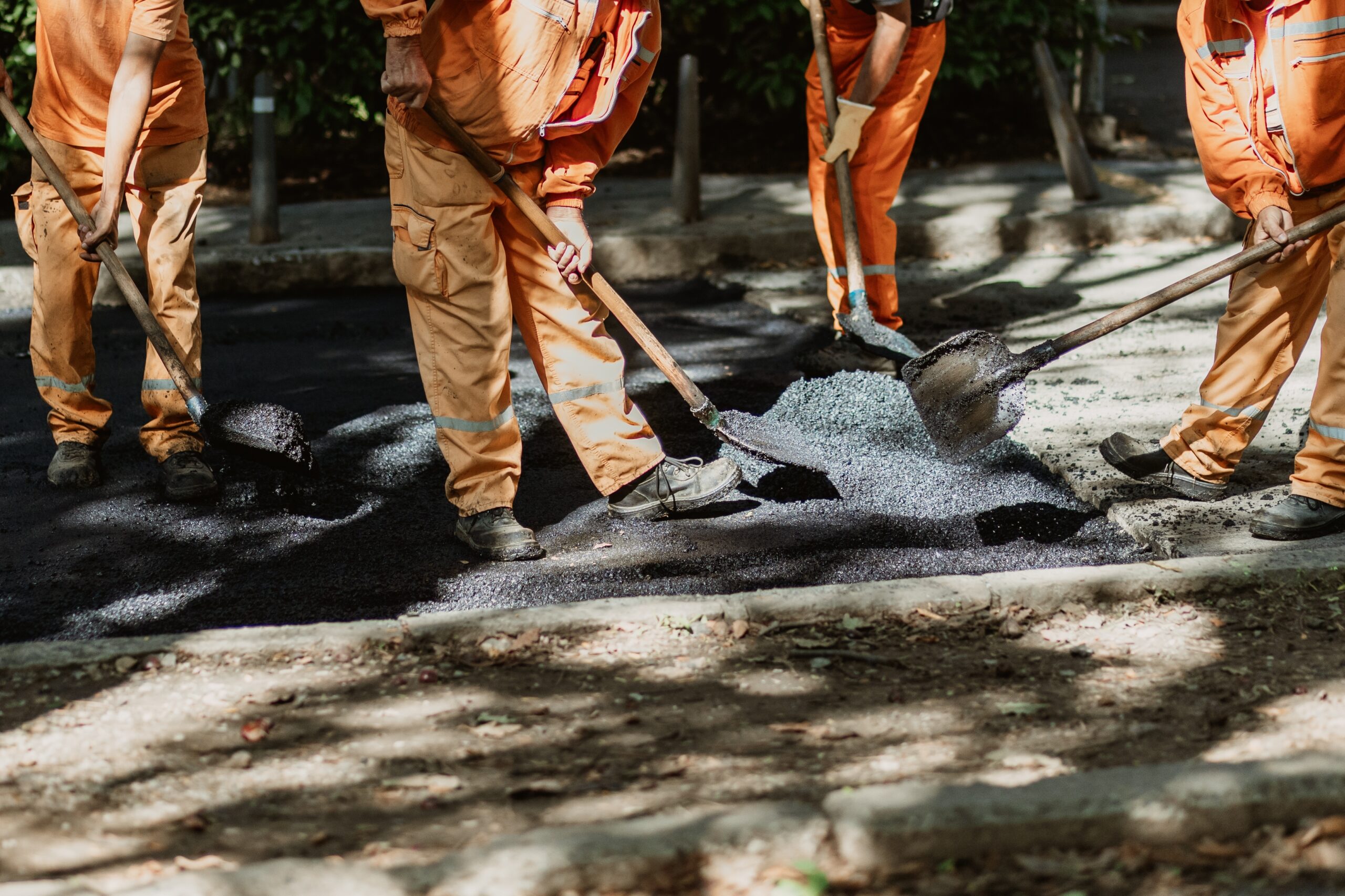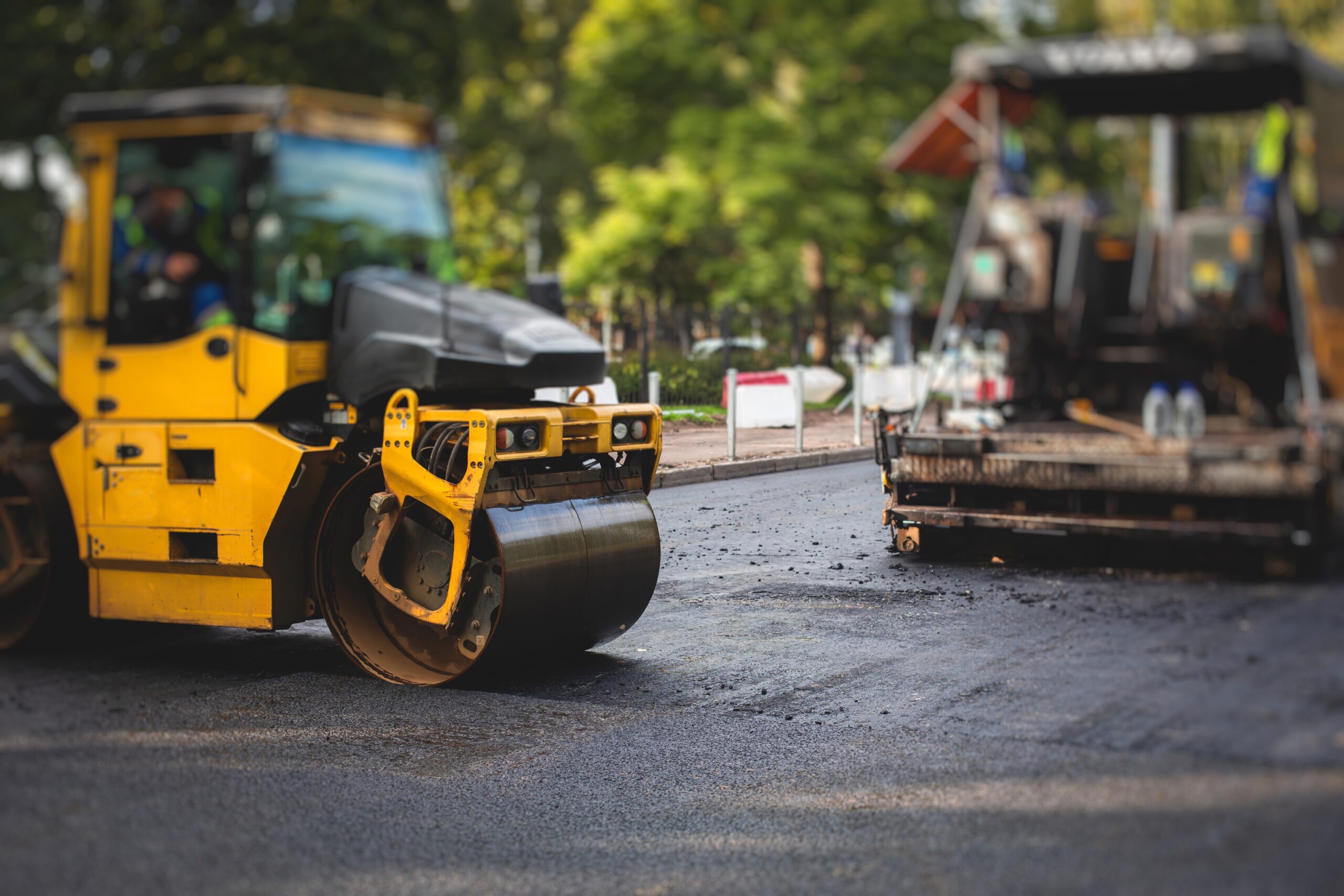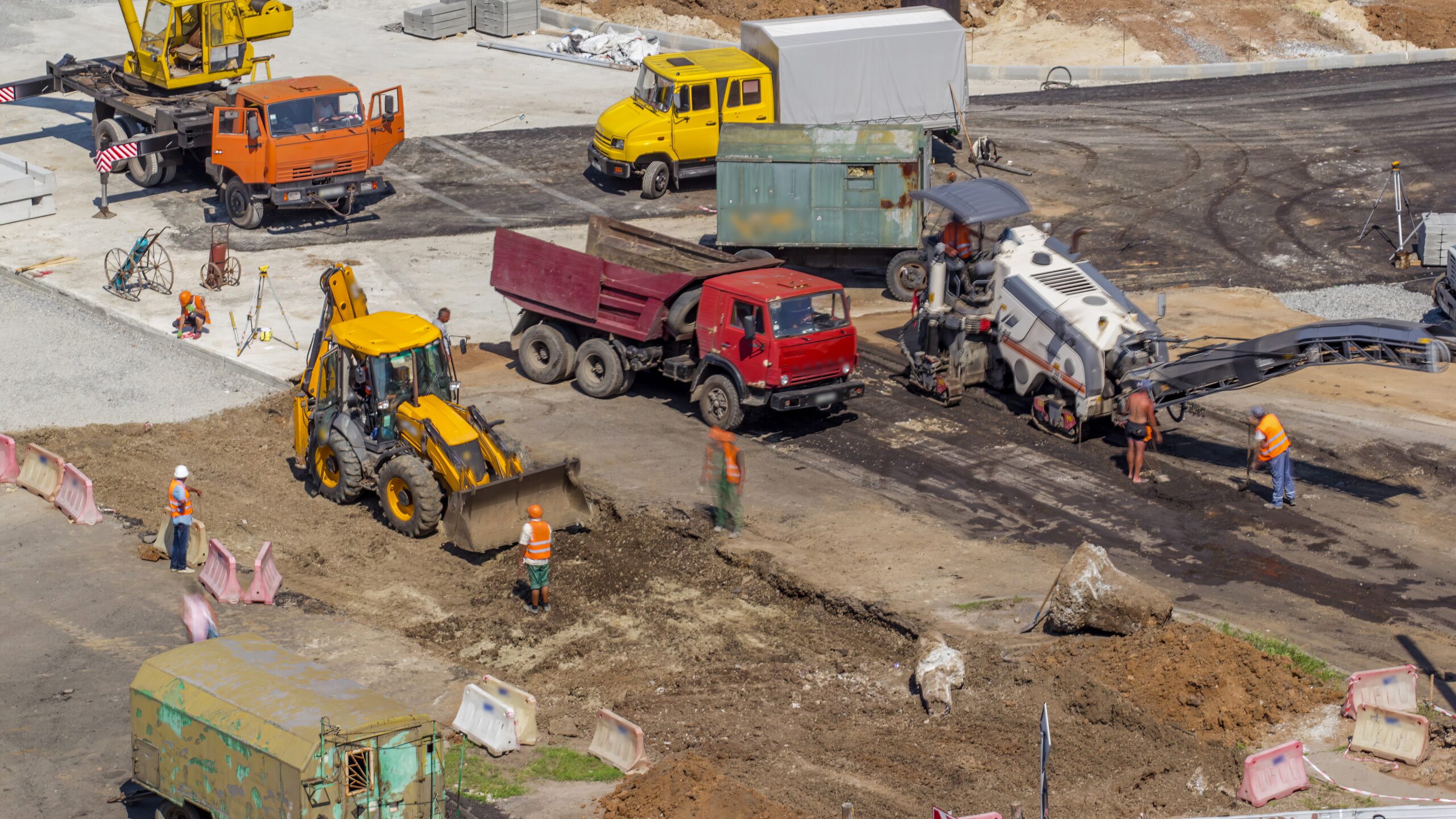A parking lot resurface is the process of applying a new asphalt layer over an existing lot to restore its strength, safety, and appearance. Unlike minor patching, resurfacing addresses both surface and structural issues, providing the pavement with a fresh start and extending its lifespan by decades.
According to the National Safety Council (NSC), tens of thousands of crashes occur in parking lots and garages every year in the United States, resulting in hundreds of deaths and thousands of injuries. Many of these incidents are linked to uneven surfaces, faded markings, and poor pavement conditions that reduce visibility and increase hazards.
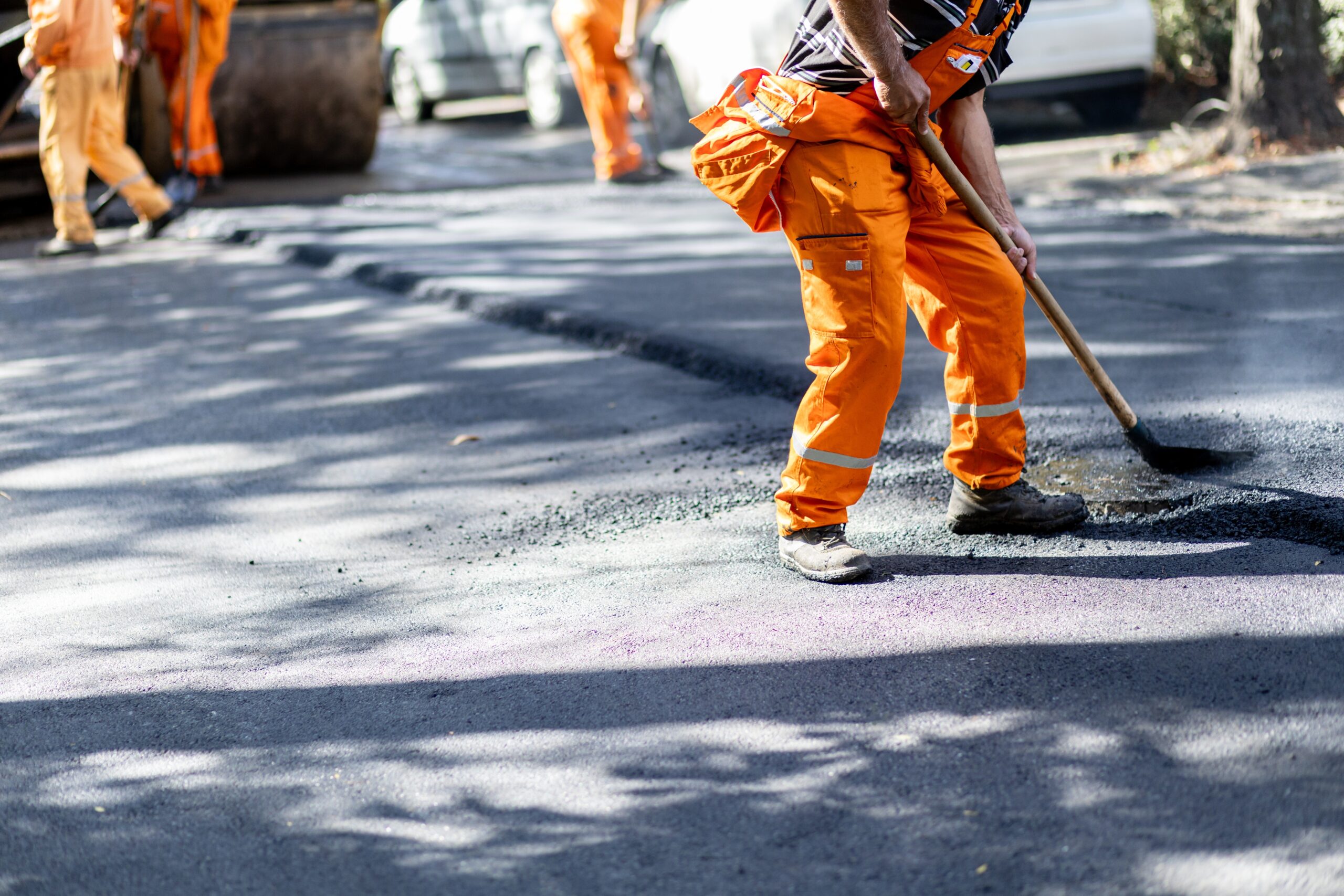
For property owners and managers, resurfacing is more than a cosmetic upgrade; it’s a crucial step in reducing liability, ensuring safety, and preserving property value. That’s why understanding overlay vs replace your asphalt surface is essential for long-term planning.
In this guide, we’ll break down the key signs, risks, and cost factors that indicate when your parking lot may need a full resurface.
Clear Signs Your Parking Lot Needs Resurfacing
The most obvious way to determine if your parking lot needs resurfacing is by examining the surface. If you notice widespread damage that cannot be repaired, it’s time to take action.
1. Alligator Cracks and Spiderweb Patterns
Alligator cracks, sometimes called spiderweb or fatigue cracks, spread across the pavement in a reptile-skin pattern. They are one of the most apparent signs that the asphalt base has weakened.
Minor repairs or surface treatments won’t stop the damage once these cracks appear, because the problem runs deeper than the top layer. At this stage, resurfacing is usually required small fixes like crack sealing to prevent asphalt damage are no longer effective once structural failure has set in.
2. Potholes That Keep Coming Back
If potholes are repaired but reopen after rain or seasonal changes, it means the subbase is unstable. A full resurface is the only way to fix the root cause.
3. Drainage Problems and Standing Water
Pooling water after rain or snow is one of the most significant warning signs of parking lot failure. When water doesn’t drain properly, it seeps into cracks, freezes, and expands, causing the pavement to break down from within.
According to the Environmental Protection Agency (EPA), stormwater that is not managed effectively accelerates surface deterioration and increases long-term maintenance needs. Resurfacing and regrading help restore proper slope and improve drainage to protect pavement life.
4. Surface Crumbling and Loose Gravel
When asphalt starts breaking down into gravel, the binder holding the pavement together has worn out. This is a sign that the pavement has reached the end of its life.
Safety Risks That Can’t Be Ignored
A failing parking lot isn’t just unattractive; it creates serious safety hazards.
1. Trip Hazards for Pedestrians
Cracks, uneven areas, and broken edges create trip hazards. The Centers for Disease Control (CDC) reports that slips, trips, and falls are among the leading causes of workplace and public injuries, with many occurring in parking areas.
2. Vehicle Damage from Uneven Surfaces
Potholes and ruts cause flat tires, bent rims, and suspension problems. Businesses risk tenant complaints, lawsuits, and insurance claims.
3. Faded Lines and ADA Markings
If lines, crosswalks, or ADA ramps have faded, properties may face non-compliance issues. Resurfacing allows for fresh striping and updated ADA accessibility features.
4. Age and Lifespan of Asphalt
Even if your lot looks fine, the age of the pavement is a strong indicator of when resurfacing may be needed.
On average, well-maintained asphalt pavement lasts 15-20 years, but heavy traffic, freeze-thaw cycles, and delayed repairs can significantly shorten this lifespan.
Once a lot has exceeded two decades or has already undergone multiple overlays, resurfacing is often the most cost-effective choice.
Past Repairs and Maintenance History
The condition of how well a lot has been maintained affects how long it will last.
- Lots that skipped routine sealcoating or crack sealing wear down faster.
- If potholes and cracks reappear despite repairs, it’s a sign resurfacing is needed.
- If yearly patching costs reach 25-30% of resurfacing costs, it’s more cost-efficient to invest in a resurface.
Weather and Climate Impact in Colorado
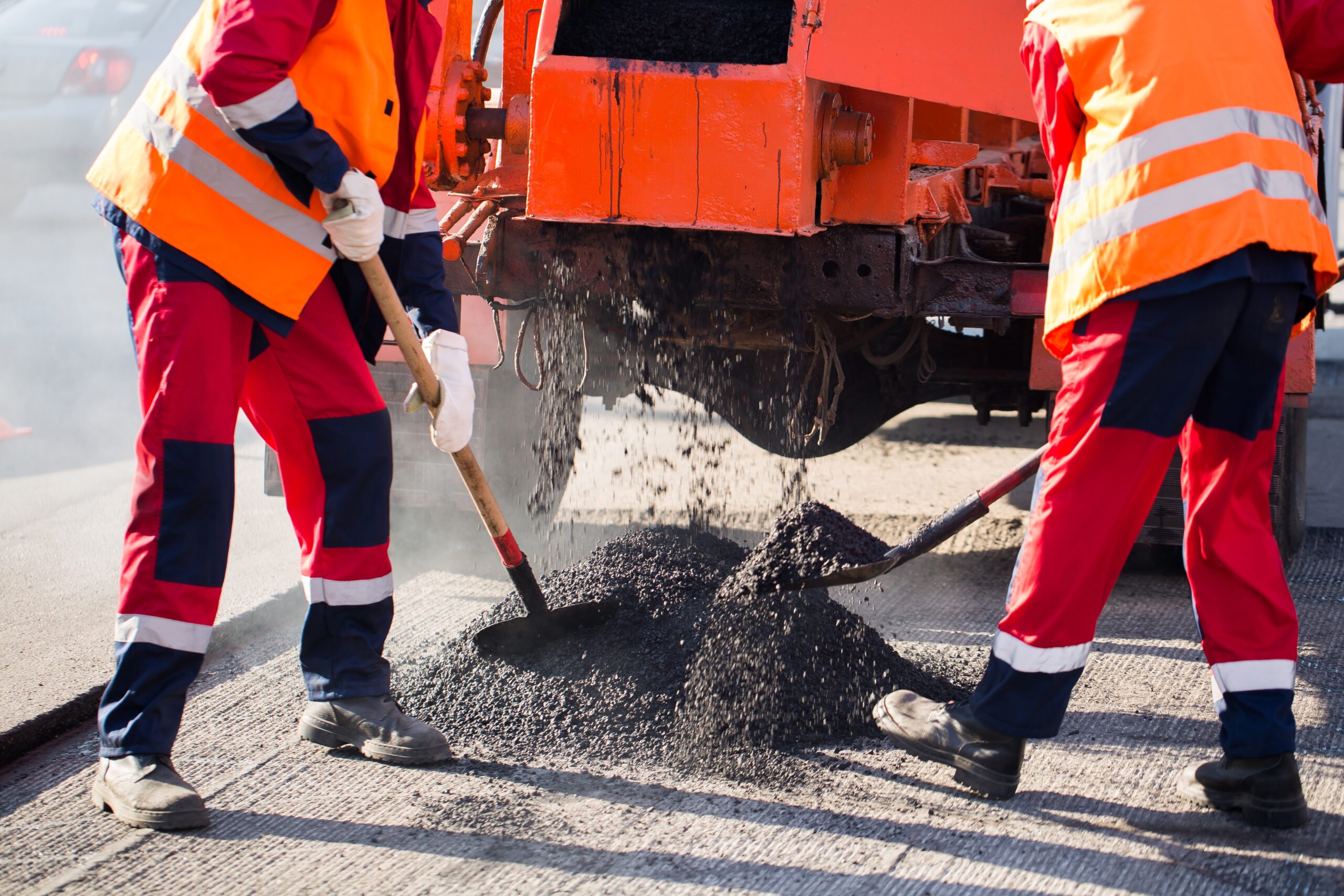
Colorado’s climate is especially tough on asphalt.
- Freeze-thaw cycles cause water in cracks to expand by approximately 9% when frozen, resulting in small cracks that can lead to significant structural damage.
- Snow plows and deicing salt: wear down surfaces and chip away at asphalt.
- Heavy rainfall and snowmelt: worsen drainage issues, leading to base failure.
Local paving contractors often use stronger mixes and improved slope designs to handle Colorado’s unique weather conditions.
Heavy Use and Traffic Load
Not all lots wear at the same pace.
- High-traffic areas, such as warehouses, shopping centers, or apartment complexes, tend to degrade more quickly.
- Heavy trucks and delivery vehicles exert more pressure on asphalt, resulting in rutting and surface fatigue.
- If usage has increased beyond the lot’s original design, resurfacing is usually required.
Cost Factors and Long-Term Value
Resurfacing requires a larger upfront investment, but the long-term return is significantly greater.
- A resurface can extend the life of a vehicle by 20-30+ years.
- It reduces repetitive patching expenses and liability claims.
- A fresh, smooth lot improves curb appeal and adds property value, attracting more tenants or customers.
When to Call a Professional Contractor
If you notice multiple warning signs, a professional contractor can determine whether resurfacing or full reconstruction is necessary.
Contractors like Asphalt Coatings Company bring in-house crews, advanced milling equipment, and expertise in understanding Colorado’s unique weather and soil conditions.
An inspection will determine whether resurfacing or replacement is the best option, along with improvements to drainage and striping.
Protect Your Parking Lot Investment
Your parking lot is more than a surface; it reflects your property’s safety, value, and long-term upkeep. When widespread cracks, potholes, poor drainage, or faded striping appear, patching alone won’t solve the problem.
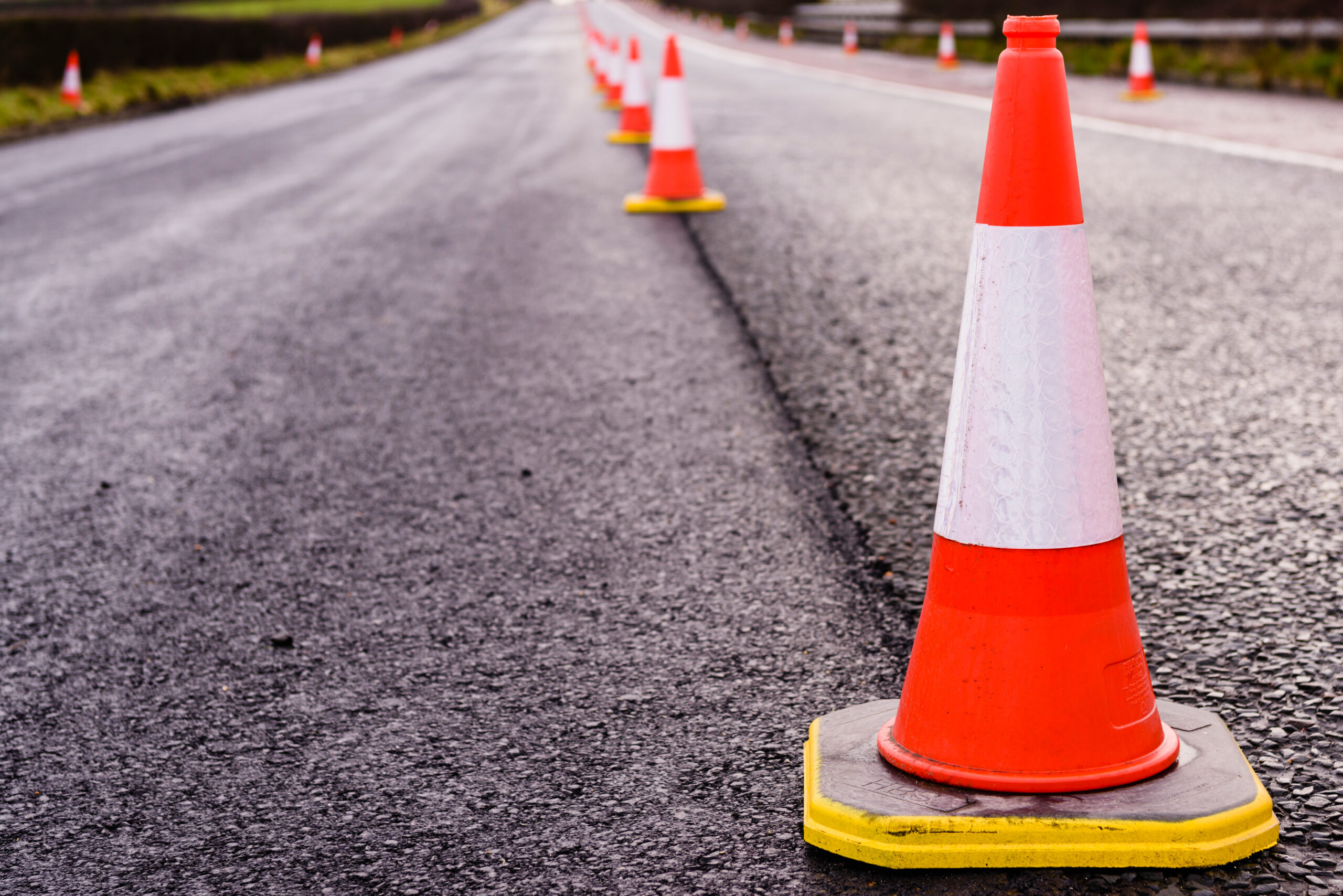
Resurfacing restores durability, improves curb appeal, and extends pavement life by decades. For property managers in Colorado, partnering with a contractor who understands local freeze-thaw cycles and the demands of heavy traffic is essential. Don’t wait for minor issues to become significant liabilities.
Contact Asphalt Coatings Company today for a professional resurfacing solution that saves money, protects tenants, and keeps your property safe and compliant.
Frequently Asked Questions
1. Do parking lots need to be closed during resurfacing?
Yes. The lot must be closed while work is completed and the asphalt cures, but projects can often be scheduled in phases to minimize disruption.
2. What is the best season to resurface a parking lot in Colorado?
Spring through early fall is the best time, since warmer temperatures allow asphalt to cure properly and last longer.
3. Can a resurface improve the appearance of my property?
Absolutely. Resurfacing creates a smooth, dark finish that boosts curb appeal and makes the property look well-maintained.
4. Will resurfacing make my lot ADA compliant?
Yes. Resurfacing includes fresh striping and the option to add ADA-compliant markings, ramps, and accessible parking spaces.
5. How often should a parking lot be inspected?
A parking lot should be inspected at least once a year, ideally after winter when freeze-thaw cycles cause the most damage.
High-traffic lots or those exposed to heavy trucks may require inspections every six months to identify early signs of cracking, drainage issues, or surface wear before they escalate into costly repairs.

